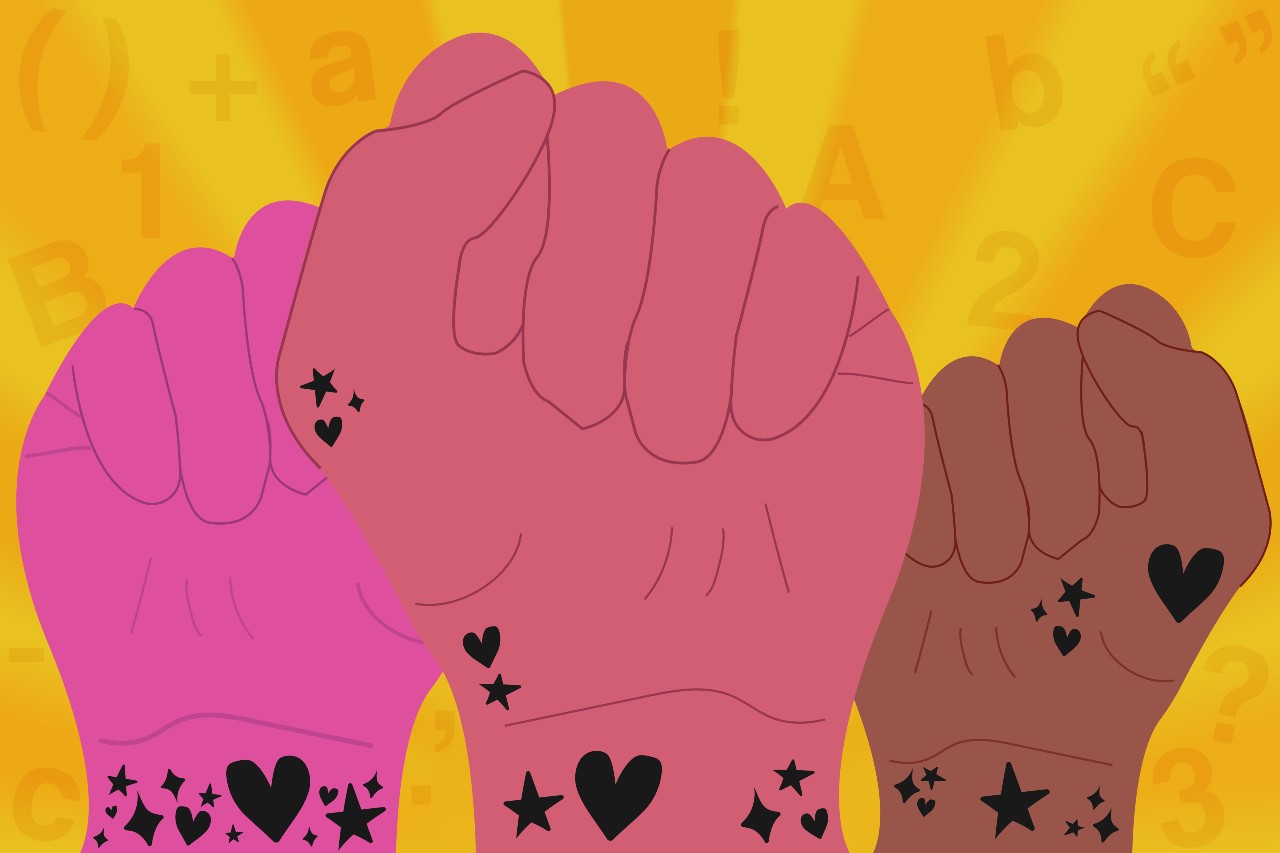Just in time for Women’s History Month, Netflix’s new original “Moxie” sets the stage for high school teens stepping into their identities as they tackle sexism in their school. Based on the novel written by Jennifer Mathieu, the movie is directed by Amy Poehler and follows a shy teen, Vivian, who tries to find her voice by publishing an anonymous feminist zine called “Moxie.” The film “Moxie” shows how Vivian and her friends navigate their identity within a movement that they care about. Tackling gender inequality in sports, a neglectful administration and intersectional feminism, “Moxie” is the perfect coming-of-age film for teens and adults alike.
Here’s to the Revolution!
Change is happening everywhere and the world is no stranger to using rebellion to get things done for the betterment of the people. Vivian however, would prefer to avoid confrontation if she can. Despite her mother’s socially conscious and political past, Vivian prefers to keep her head down while stumbling through her junior year with her best friend, Claudia.
That is until the new girl, Lucy, confronts football captain Mitchell Wilson for harassing her. Stating, “Annoying can be code for worse stuff,” she explains why Mitchell’s behavior is something they shouldn’t overlook. Inspired by her bold new classmate, Vivian retaliates against a class list that’s sent out ranking all the girls in the school under derogatory categories. In an ironic twist, Vivian, who was voted “Most Obedient,” goes on to channel her mother’s ’90s feminism, Bikini Kill’s “Rebel Girl” and a cool leather jacket into art and words.
She keeps herself anonymous as she publishes these papers and leaves them in the girls’ bathroom. Vivian encourages everyone at school to go against the double standards that subject women to unfair punishment while at the same time forming a new group of friends and creating new ways to show what she cares about. It starts with drawing hearts and stars on your hands but these little forms of rebellion allow “Moxie” to address many different manifestations of sexism.
In various shots, we see unwanted advances, overt touching and blatant hostility perpetrated by the male population at Brockport High, whose bad behavior is excused as simply being “annoying.” From the less nuanced conversation of rape to the way Mitchell cuts Lucy off in class to disagree with her, sexism is everywhere at Brockport. It is only further perpetuated by the teachers’ complicity and is worsened when Lucy goes to the principal and is put in band to channel her “emotions.” It sheds a light on the way high schools continuously let this kind of behavior slide at the expense of female students.
Mitchell is praised for being a mediocre football player because his arrogance and hostility translate into confidence, normalized by a “boys will be boys” mentality. “Moxie,” however, tells us, no, boys will be held accountable for their actions.
Despite the important topic, we get to see the way Vivian starts to develop feelings for childhood classmate Seth and how Vivian interacts with her mom in a playful way. With an extremely diverse cast, “Moxie” brings up the importance of intersectionality between race, gender, sexuality and disability that the feminist movement has lacked, in real life and on-screen. All the while it keeps a balanced tone that is important but not dark, wholesome but not overtly so. Perfect for YA audiences and up.
On the topic of intersectional feminism, Josie Totah’s character, CJ, speaks about the way people disregard her new name, and Lauren Tsai’s character, Claudia, battles tensions as a Chinese American from an immigrant family. The diversity of “Moxie” doesn’t feel forced; instead, these narratives add to the overall story of the film. It allows the audience to see the way these different identities play into the greater theme of feminism and the ways these teens navigate personal struggles of identity as they grow into who they are through a larger movement.
Through this, we see how Vivian struggles between doing the right thing and not knowing how to do so. Just like all movements, they have their own individual battles and disagreements. And because of that, “Moxie” has to tackle what that means in a way that doesn’t detract from the overall message.
Fear Equals Freedom
Claudia has been Vivian’s best friend for as long as they can remember but after Vivian starts her zine, she sees her friend moving on with new friends and a new boyfriend. They never used to be so different before but now Claudia feels like Vivian is leaving her. This is natural between friends but the problems arise when Vivian asks Claudia why she doesn’t care about the things they’re fighting for.
We’re briefly shown a scene of Claudia taking advice from the “Moxie” zine and attempting to go to school in a tank top to stand in solidarity with Kaitlyn Price. Kaitlyn had been sent home for wearing a tank top and “distracting” everyone from learning despite there being another girl who also wore a tank top — but because of their different body types, one is punished and the other is not.
The message is clear: The over-sexualization of women’s bodies will always be the woman’s fault. The administration disciplines them, so the students at school don tank tops in protest — all except Claudia who is scolded by her mother for dressing inappropriately. Not knowing what had happened, Vivian judges her, assuming that she is standing against them, but in the end, Claudia registers “Moxie” as a school organization so they will be allowed to hang up posters around the school.
She tells Vivian, “I do care, you just have to let me do things my way.” This brings up the point that sometimes not everyone is going to stand in unity with the movements that are important. But it’s also important to recognize that taking a stand is scary, especially when it involves breaking rules, going against your parents and perhaps everything you’ve ever known.
Just because someone isn’t publicly seen supporting a movement doesn’t mean they oppose it, and many are scared and uncertain about how to stand up. The fact that Claudia is redeemed for registering the group shows that there’s a difference between the two and both ways of protesting are important and should be recognized.
Vivian is quick to adapt and change but she wasn’t always that way. We also see Claudia’s fear of moving forward and losing everything. After getting suspended for taking the fall for Vivian creating “Moxie,” it is explained that everything is riding on Claudia getting into a good college. She doesn’t protest in the same way because of the pressure of coming from an immigrant family and potentially becoming a first-generation college student. She wants to make her parents proud and she wants to fight for the things she cares about but it’s not up to us to dictate to anyone how to do so. And it’s okay to be scared and to not know what you’re doing because with change comes experimenting and figuring out what’s wrong before being able to fix it.
“Moxie” also shows us that feminism doesn’t exclude the guys either. The narrative focuses on empowering the girls of the school and reframing how everyone looks at the problematic behavior of the boys, but Vivian’s love interest, Seth, is the first guy we see standing in solidarity with the Moxie girls, donning hearts and stars on his wrist the first day and then wearing a tank top with them the next. He’s also the only other person who knows Vivian’s secret identity.
The audience is thrust into a conversation about why it’s just as important for the guys at school to hear this message too. “They need all the help they can get,” Seth says, which means speaking out against not only the main aggressor of the film, Mitchell, but also to those who are complacent beside him, such as his best friend who constantly cheers him on or the school mascot who clearly idolizes him. The quote speaks of the male population but it applies to the women’s complacency as well — seen with Principal Shelly, who enforces the rules that send Kaitlyn home and tells Lucy that harassing is a “big word” when she describes Mitchell’s behavior toward her.
In the end, the film highlights that Moxie and the feminist movement is just as much about changing things as it is about supporting and empowering the marginalized. When Vivian finally reveals herself we see a community of girls and boys standing outside because they are supporting Emma, Mitchell’s ex-girlfriend and rape survivor. Mitchell is assumed to have gotten his due and while the film doesn’t make too much of a point to show what happens to the rest of the male population, it’s easy to assume that things will not change overnight. But at least the Moxie girls have a community with each other that’s full of love and support and they’ll stand up for each other and anyone else who needs them.
“Moxie” is a movie that showcases the fuel of passion and injustice turned into a story of hopeful determination and love. Feminism is about unity, and we’re scared more about what happens if we choose to submit than if we choose not to take the risk. At the beginning of the film, Vivian dreams of losing her voice and in the end, we see all the ways that she and her friends find it, maybe for the first time ever.

















